Persian cyclamen: species and cultivation at home
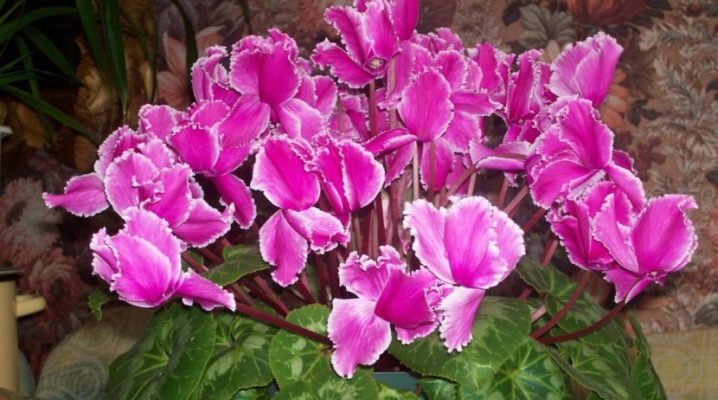
Persian cyclamen is an indoor ornamental plant that is grown in pots. The main distinguishing feature of the culture is bright flowers. It is thanks to this characteristic that the plant attracts many flower growers. At the same time, the process of caring for a flower is rather complicated and complex, therefore, beginners in flower cultivation rarely give preference to cyclamen.
In our article we will talk about the conditions of maintenance and the rules for caring for the plant, and also consider the botanical features of Persian cyclamen.

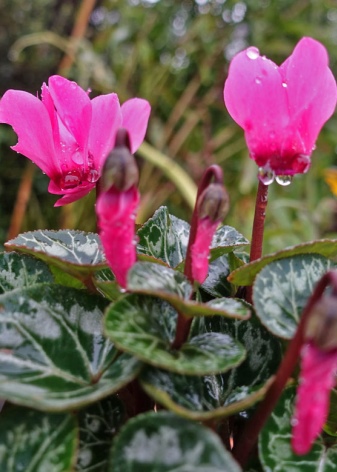
Peculiarities
By its botanical nature, Persian cyclamen is a tuberous flower. But it is also important to note that it belongs to the myrsin family, is a herbaceous and perennial plant. It is believed that with careful care and if all recommendations for the maintenance of Persian cyclamen are followed, Persian cyclamen can live up to 25 years.
Initially, the birthplace of this flower is the territory of the Eastern Mediterranean. However, today cyclamen in natural conditions can also be found on the territory of the Russian Federation, in particular, in Krasnodar, Crimea.
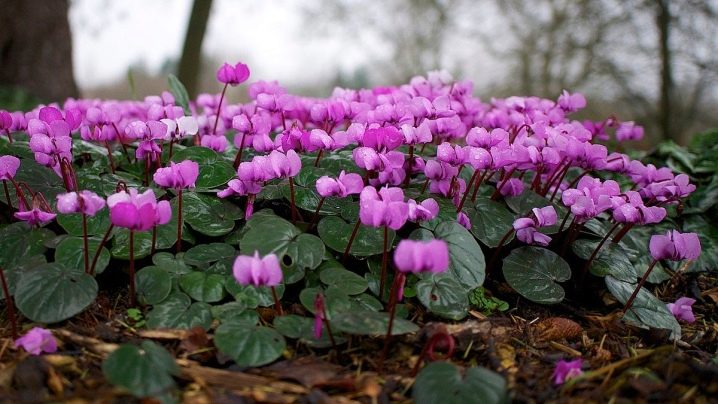
The flower is rather small in size. So, despite the fact that it reaches 30 centimeters in height, 20- and 15-centimeter specimens are better known. The shape of cyclamen tubers is oval, slightly flattened from the sides. If we talk about the leaves of the plant, they have an unusual and original shape that resembles a heart, and in size they can reach 14 centimeters (when assembled into a socket). The leaves themselves are green in color, but the petioles are colored reddish. In addition, silvery streaks can be observed on the sheets themselves.
Placed chaotically, such veins create an intricate pattern on the surface of the leaf, which gives an original appearance to the entire plant.
As for the flowers themselves, they all consist of a clearly defined number of petals - 5 pieces. The flowers can be up to 5 centimeters in diameter.... Due to the unusual shape of the flower, which is achieved due to the fact that one of the petals bends back, the flower is often compared to a butterfly. The color palette is also quite varied. So, you can find the whole gamut of shades from completely white to red or even purple.
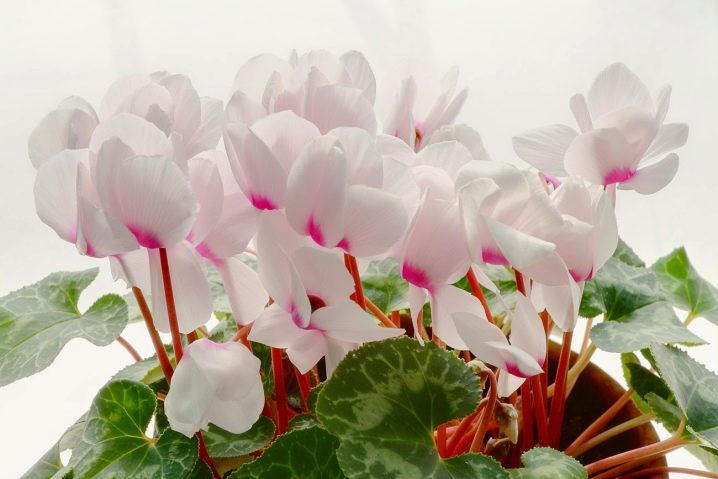
You can observe the flowering process for a rather limited period of time, which falls on autumn and winter. Its duration can vary from 10 days to 2-3 months.
How is it different from the European one?
Persian cyclamen is not the only type of cyclamen genus. Another popular variety is the European cyclamen. Despite the fact that both, in their essence, belong to the same family and genus, they have a number of differences. Let's consider them in more detail.
First of all, Persian cyclamen can be distinguished from European cyclamen by the appearance of the leaves, in particular, by their color. The leaves of the Persian variety are green in color, while the leaves of the European variety are anthocyanin-colored.
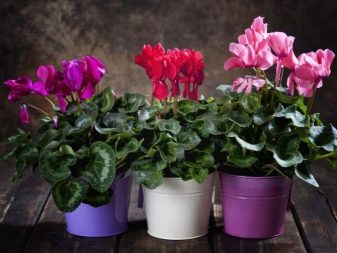
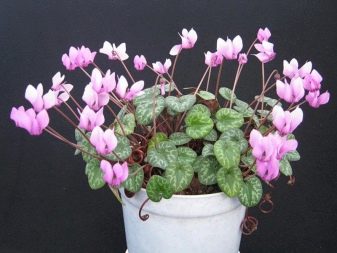
The second feature, thanks to which it is possible to distinguish one or another cyclamen - this is the location of the tuber... So, it has been scientifically proven that in a Persian plant, the tuber is at two levels: most of it is hidden in the soil, but at the same time, a small area can be seen on the surface. The tuber of the European flower is completely submerged in the soil, therefore it is impossible to notice it with the naked eye.
The periods of flowering of plants also differ. As mentioned above, the Persian cyclamen blooms in winter and autumn, and the European one in spring and summer. Moreover, it is worth paying attention to the dimensions of the flowers themselves - they are much smaller in the European variety.
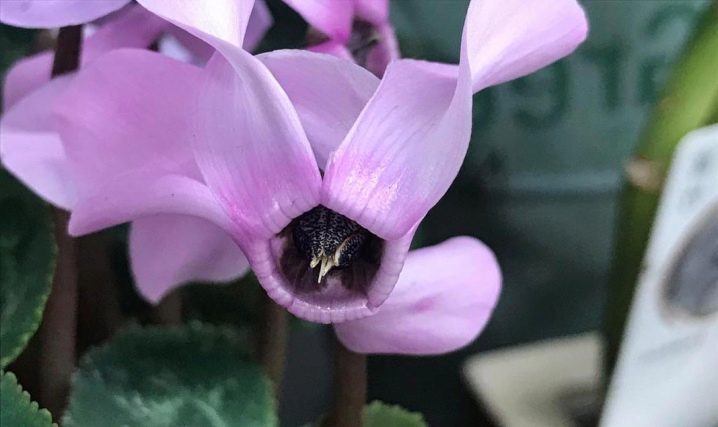
Among other things, you should pay attention to the level of endurance of the flower. So, it is believed that the European variety tends to tolerate room temperature better than the Persian. The latter, in turn, prefers lower temperatures.
And the last distinguishing feature - rest cycle. In this regard, the varieties of cyclamen are quite different. So, the European type practically does not fall into a state of rest. At the same time, after the flowering period, the Persian cyclamen goes into a real hibernation: its leaves can turn yellow and fall off.
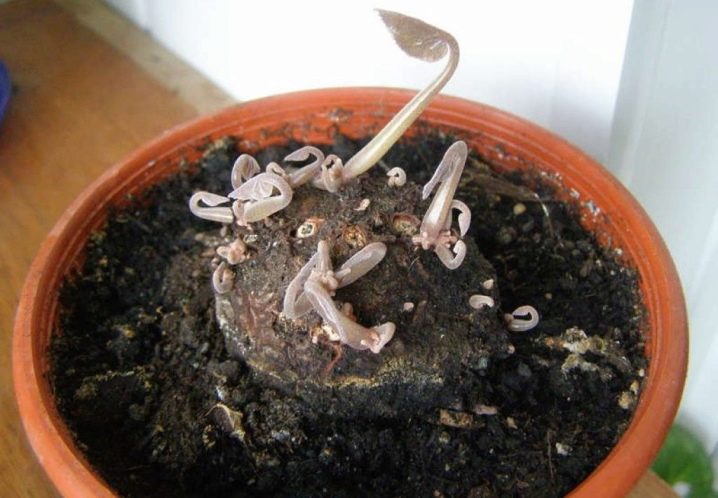
Varieties
There is a huge variety of varieties of Persian cyclamen. Let's consider the most popular ones:
- "Victoria" - has an original color, the main part of the flower is completely white, and at the edges you can see crimson eyes and fringe;

- "Barbarossa" - the appearance of the flower is similar to iris, the color is pale pink;
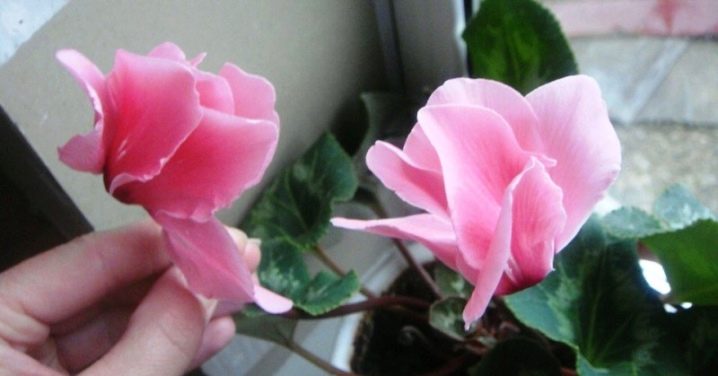
- "Aurora" - a distinctive feature of this plant is an original and rather intense aroma;
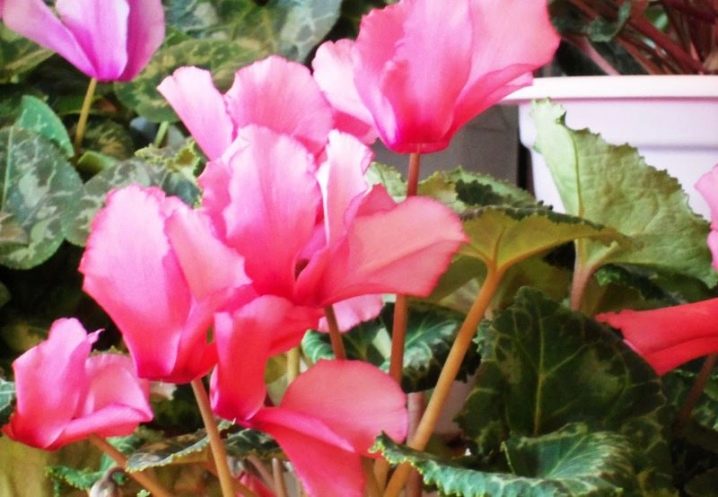
- "Leelu" - in length reaches 20 centimeters, flowers have a lilac color;
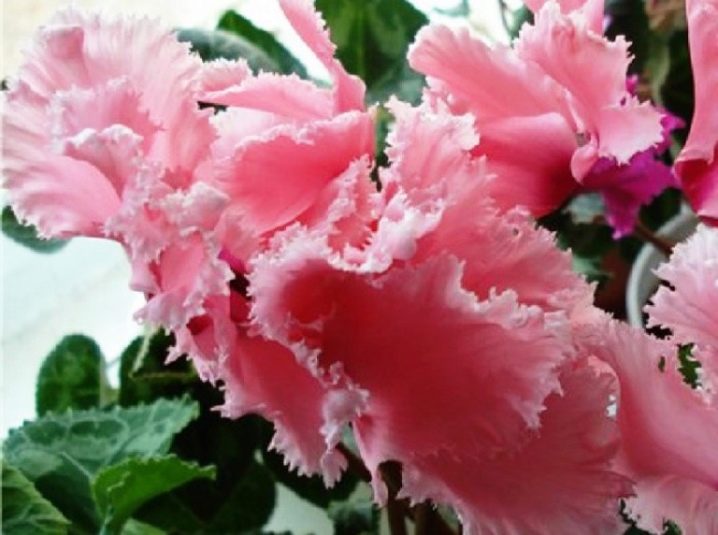
- "Caliph" - the cyclamen of this variety blooms from late autumn to early April, the flowers are painted in an unusual pink shade and have a silvery overflow;
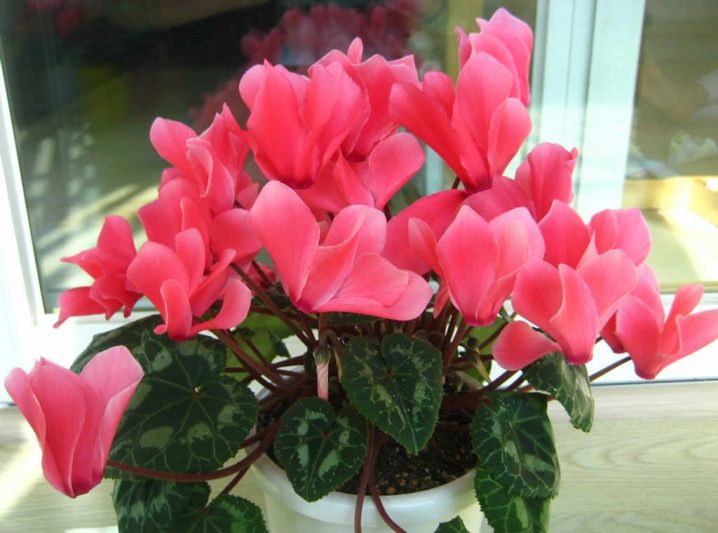
- "White Tale" - the color of the plant is consonant with the name, it is white, along the edges of the flowers you can see a faint fringe;

- "Red partisan" - just as in the previous case, the name comes from the color;
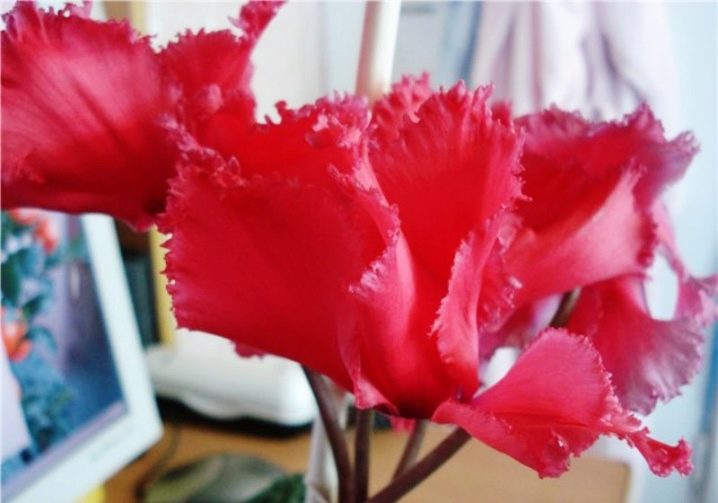
- Orpheus - is considered one of the largest varieties, since in its size it can reach 30 centimeters;

- "Giant" - the diameter of the flowers does not exceed 5 centimeters, the variety can be painted in various shades from white to bright purple;
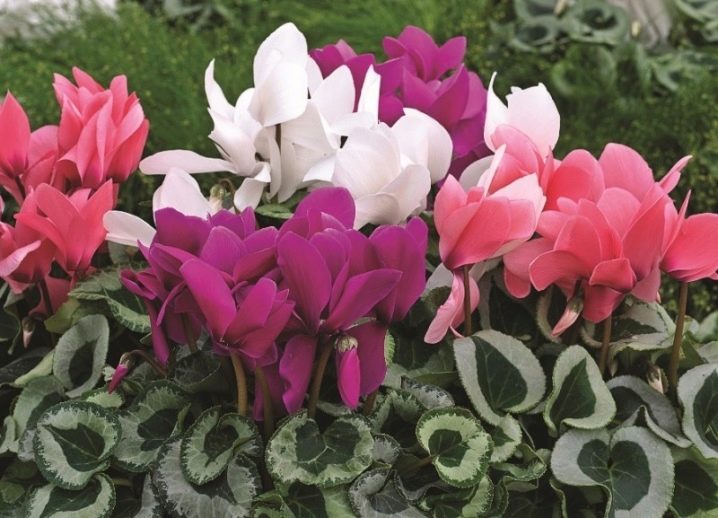
- "Striata" - the peduncle reaches 15 centimeters in length, the plant is distinguished by a mixed white-pink color;
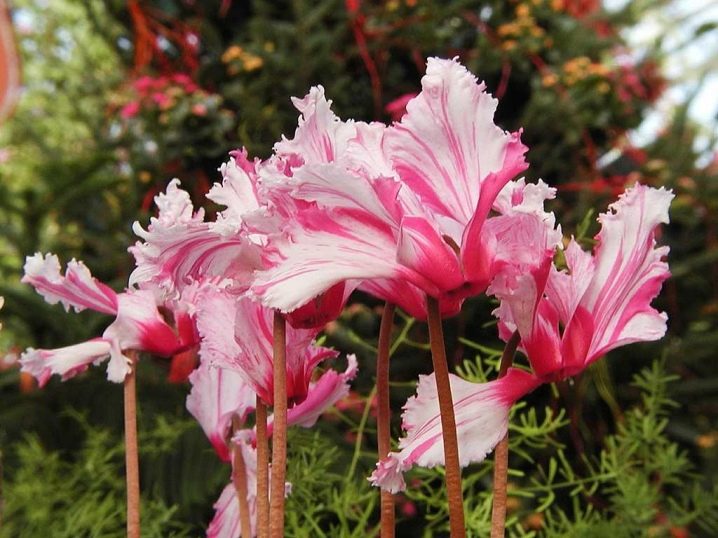
- "Gabi" - this variety has earned the love of flower growers due to the intense and long flowering period, the flower petals are painted in a scarlet tone;

- "Rococo" - the view is considered one of the most aesthetically pleasing in its appearance;
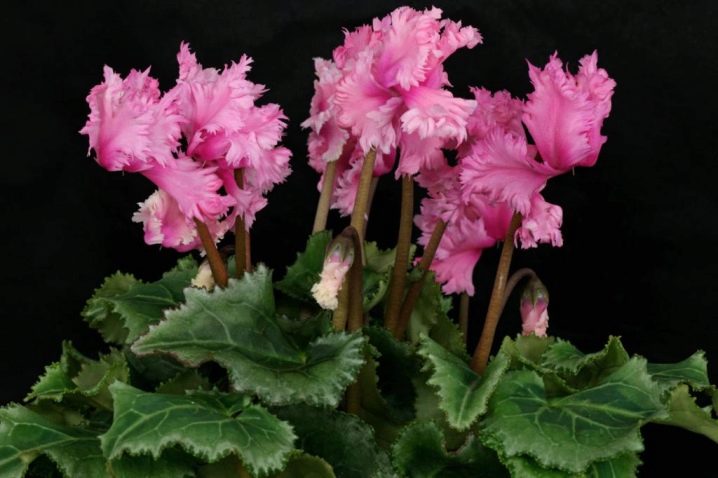
- "Moon" - the original characteristic of the variety is the needle-like fringe;
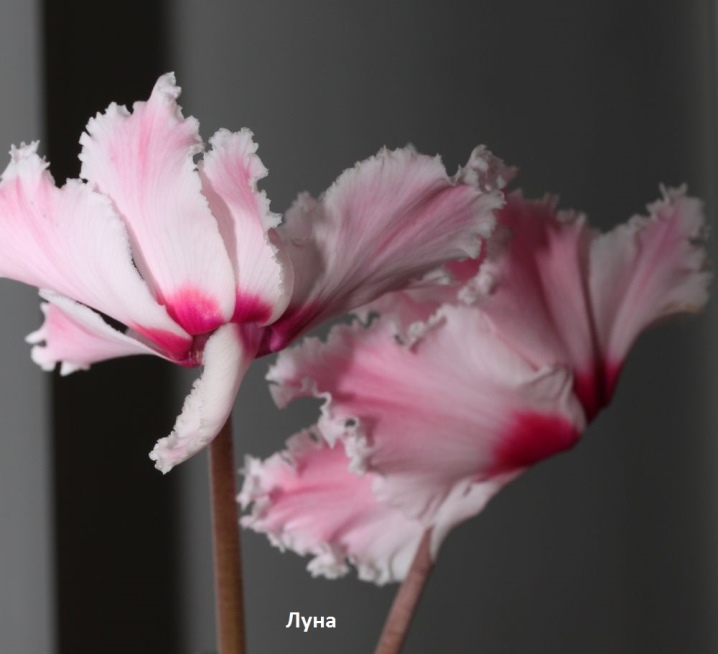
- "Helga" - the plant has two-colored flowers with an eye.
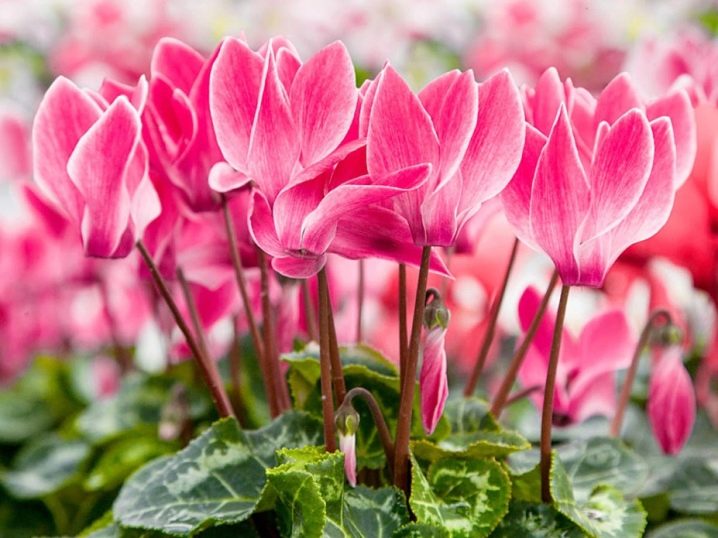
And also varieties with double flowers are very popular among florists. In addition, depending on your personal preference, you can purchase large-flowered or miniature specimens. On request, it is possible to purchase several species, which are a hybrid mixture.
Conditions of detention
The viability of the plant, the activity of its development, as well as the flowering processes directly depend on those external conditions in which the flower is kept. That is why special attention must be paid to the state of the environment.
Botanical scientists, as well as experienced florists, strongly recommend purchasing a new plant only during the budding period. It is believed that the more buds and fewer blossoming flowers, the better. But it is also important to examine the appearance when buying: the leaves should have a fresh green color, and there should be no bloom on the flowers.
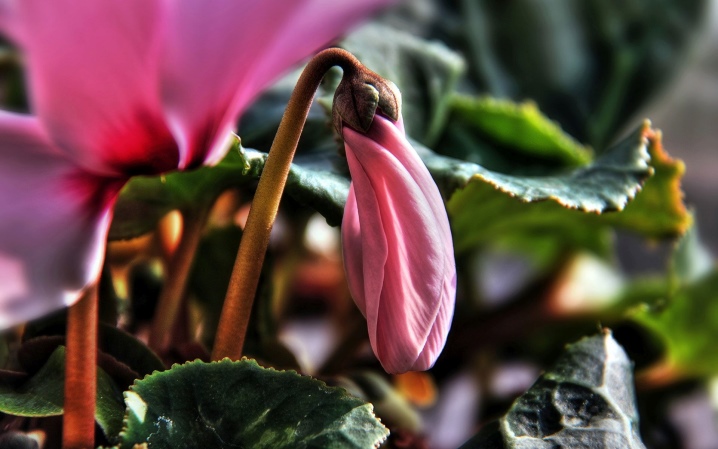
After you have bought a flower and brought it into the house, you need to choose the right place for keeping it. The best option would be a window sill that faces east or west.
As for the temperature regime, then it is important to provide the Persian cyclamen with rather cool conditions: no more than 16 degrees Celsius during the day and no more than 10 degrees at night. In the event that the thermometer begins to exceed 20 degrees Celsius, then the plant will begin to fall into a state of dormancy. And also it is worth considering the fact that the plant does not tolerate sudden jumps and changes in temperature, as well as winds and drafts. Ignoring these rules will lead to dramatically negative consequences, possibly even to the death of the plant.
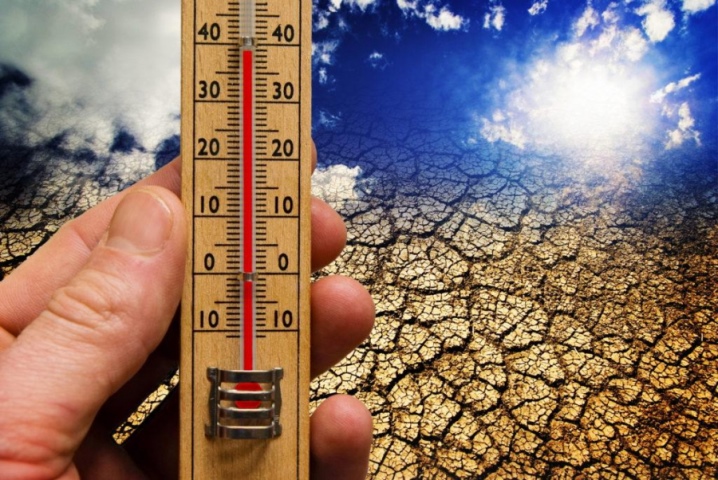
The level of lighting plays an important role. First of all, direct sunlight should be avoided - their effect will provoke the appearance of burn spots on the surface of the flower. Preference should be given to fairly bright, but diffused lighting.
The quality of the air is also of great importance - it must be fairly humid. In the event that the natural climatic conditions in which the flower is contained do not correspond to the required level of humidity, then it is imperative to carry out additional moisturizing procedures, in particular, spraying the leaves (in no case should you spray the flowers themselves), as well as installing the pot with cyclamen into a pallet with wet drainage (for example, with expanded clay). In addition to humidity, attention should be paid to air purity. Gas pollution and tobacco smoke are detrimental to the plant. In this regard, the room in which the plant is kept must be regularly ventilated.
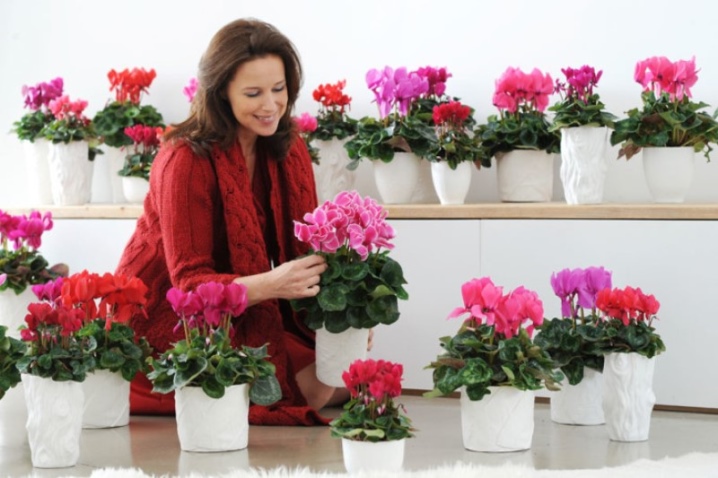
It is important to pay attention to the soil in which the plant is contained. The ideal option would be a soil mixture for bulbous plants, which can be purchased ready-made. If you want to make the composition yourself, then you should take garden soil with river sand, leafy soil, as well as humus, sand and peat.
How to care?
In order to maintain all the vital processes of the plant, it is necessary to carry out proper care at home. Compliance with all the necessary rules and recommendations will make it possible to grow a healthy plant.
Immediately after purchase, the plant should be inspected for the presence of pests, as well as for the external manifestation of any diseases. At the slightest suspicion, the flower should be transplanted.
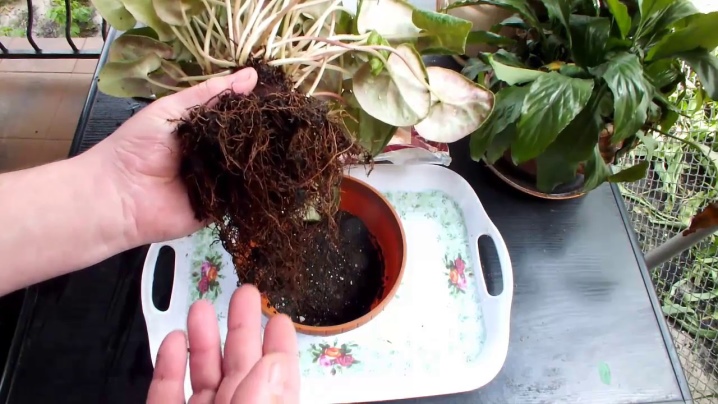
Watering is especially important for the growing process. It needs to be done regularly and systematically. So, it is believed that the optimal irrigation schedule is the frequency of applying liquid 1 time in 2 days (during wakefulness and flowering). On the contrary, at the moment when the cyclamen goes into a state of rest, one weekly watering is enough for it.
In order not to overflow the liquid, watering must be carried out according to certain rules. So, water should not be applied from above into the soil. Better to use another technique, placing the pot in a tray of water. The duration of such a procedure should not exceed 20 minutes. Moreover, special attention should be paid to the quality of the water - it must be settled (or purified in other ways), have room temperature.
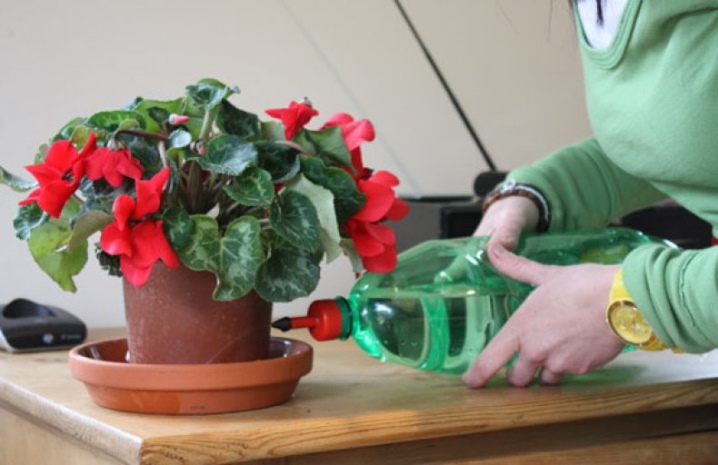
In addition to watering, fertilization is also of great importance. Persian cyclamen is a flower that needs regular feeding. So, the first portion of fertilizer must be applied within 20 days after planting the plant; additives are also needed at the moment when new leaves grow and during budding.
It is important that the composition of the applied fertilizers includes phosphorus.
In the process of leaving, it is important to monitor the plant at the moment when the flowering period has ended. During this period, it is customary to remove wilted flowers. Moreover, this should be done not by cutting, but with bare hands, carefully twisting and tearing. At the same time, it should be noted that this applies only to flowers; it is forbidden to pick off the leaves.

Transfer
The cyclamen transplant process is quite simple. The main thing is to strictly adhere to the instructions.
First you need to choose the right pot - it must fit well in size, otherwise much fewer buds will be tied on the flower. After the pot is selected, it is necessary to lay a layer on its bottom that will be intended for drainage (for example, expanded clay). Only after that, you can fill in the soil mixture you bought or prepared yourself. Now you need to carefully dig the rhizome of the plant into the filled soil. Moreover, this must be done in such a way that a small part of the tuber looks out.
At the end of the transplant, do not forget to water the plant, and after 20 days - apply fertilizer.
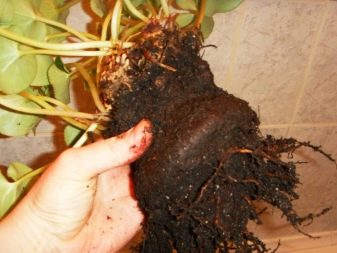

Reproduction
You can propagate and plant Persian cyclamen in room conditions in two ways: by seeds and vegetatively.
The seed method is considered to be less effective. Due to the fact that cyclamens are by nature hybrid plants, when grown by seeds, important varietal characteristics can be lost. In addition, seed propagation is a rather complicated and complex procedure. For its correct implementation, it is necessary to pollinate the plant, collect the seeds, then calibrate them. Only after that the process of processing and sowing is started. Moreover, it is worth remembering that the seedlings themselves must be dived, fed and hardened, and only after that they are allowed to be planted. Persian cyclamen, grown from seeds, will bloom only after 1-2 years.
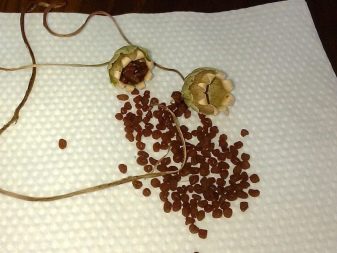
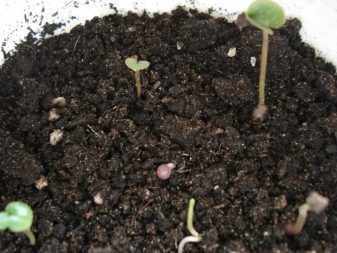
The simpler is the vegetative way. However, in this case, it is also important to remember that the tuber can be exposed to many negative influences (for example, rotting).

Diseases and pests
If you notice that the leaves turn yellow on your cyclamen, then most likely the plant is susceptible to the effects of diseases or pests.
Botanical scientists have found that most often the flower suffers from gray rot or fusarium wilt.... In order to cope with these ailments, it is necessary to water the plant with chemical solutions (Fundazol is suitable), spray with mineral agents (for example, Topsin-M), and also apply fungicides.
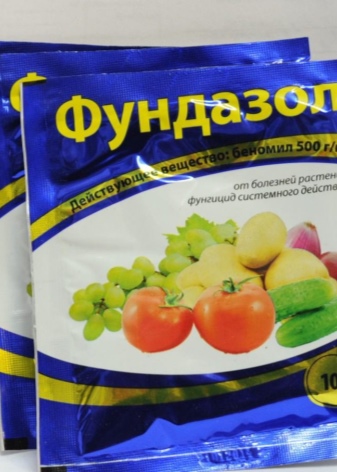
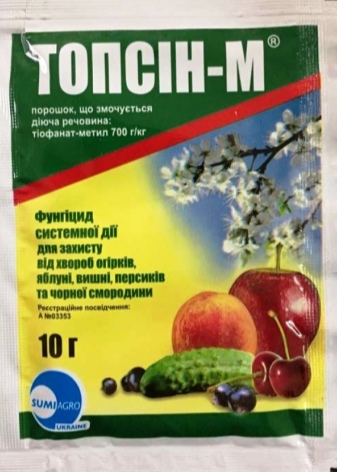
If you notice the presence insect pests (mites, aphids, beetles and others), then it is necessary to resort to the help of acaricides and insecticides (for example, "Aktara").
For information on how to properly grow cyclamen, see the next video.







































































































Why do the leaves curl?
You need to try to feed. Or from a lack / excess of light.The leaves can also curl from the dry air + high temperature, as in our apartments in winter.
The comment was sent successfully.